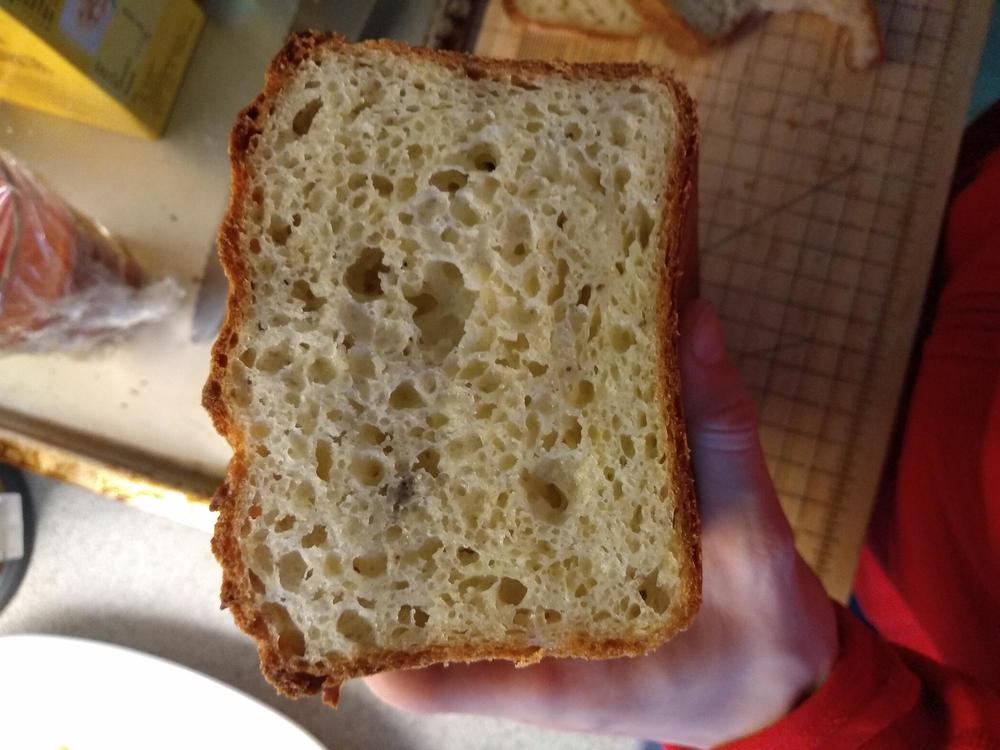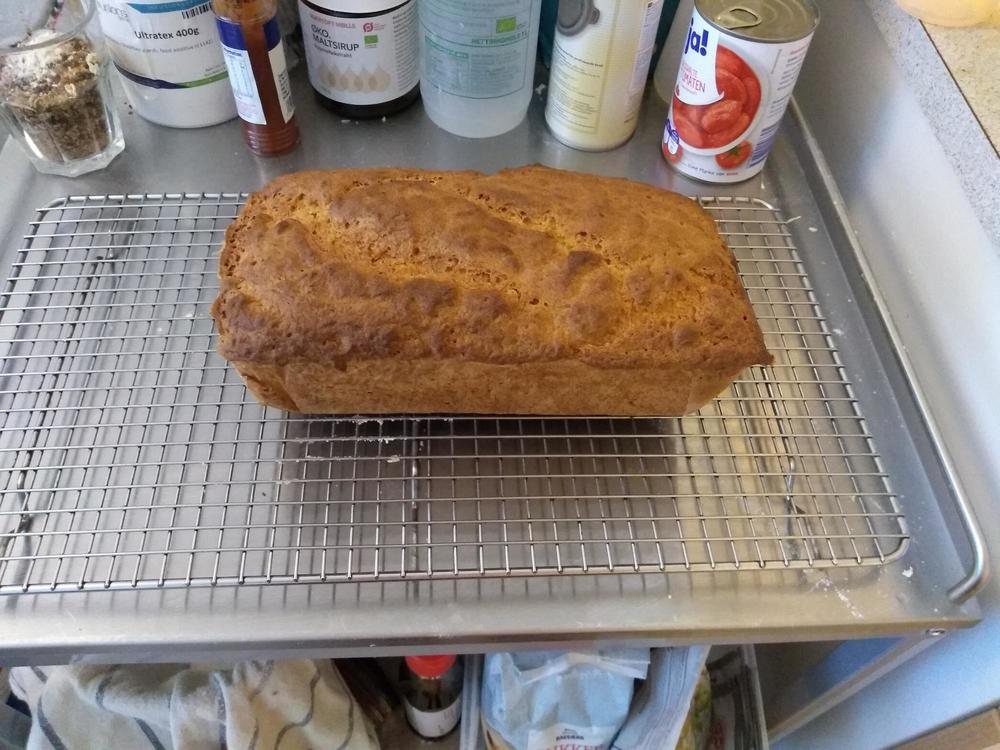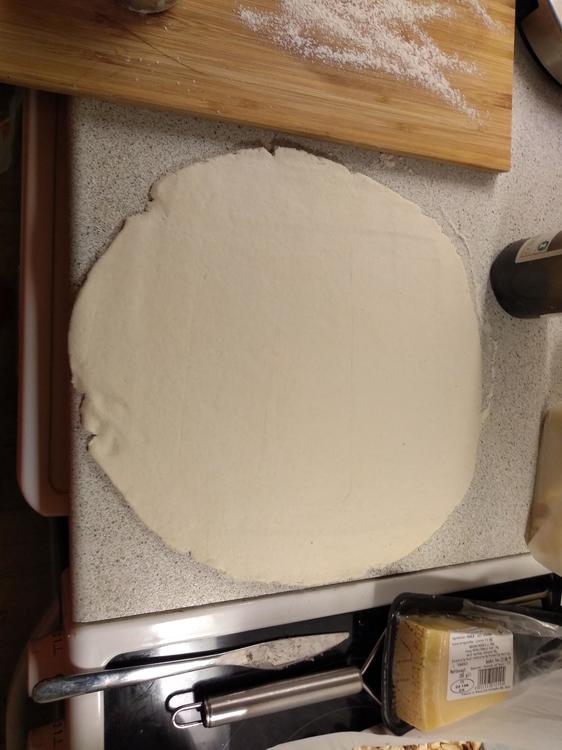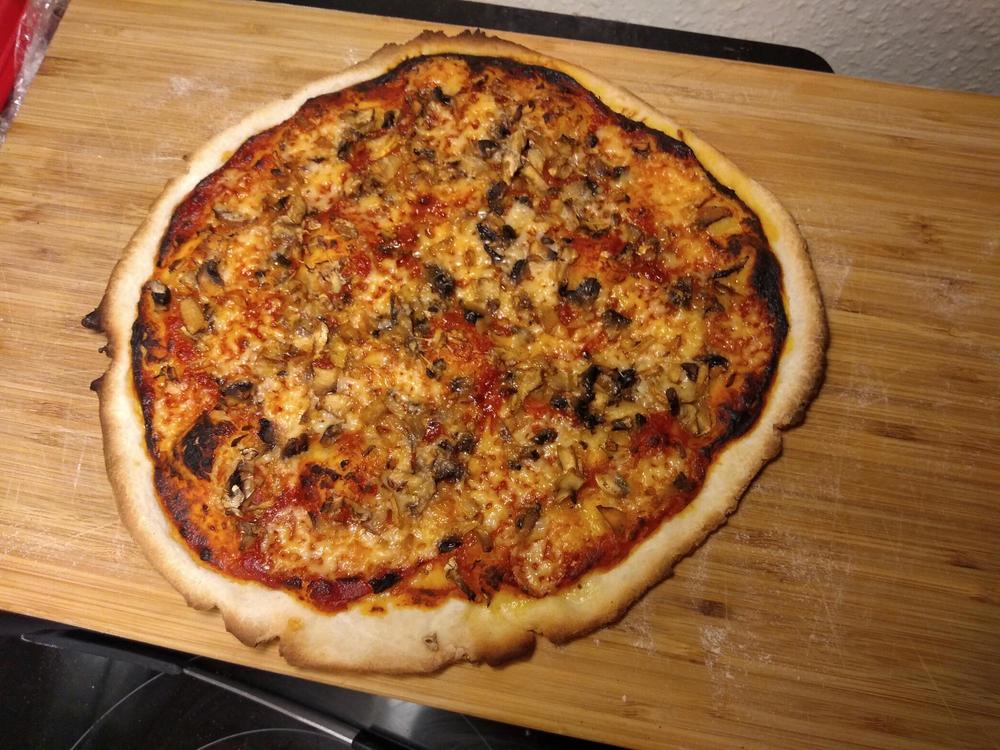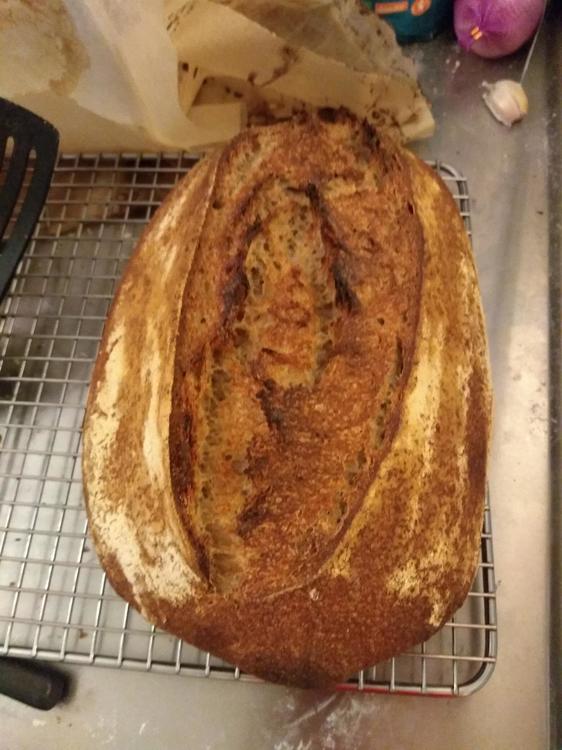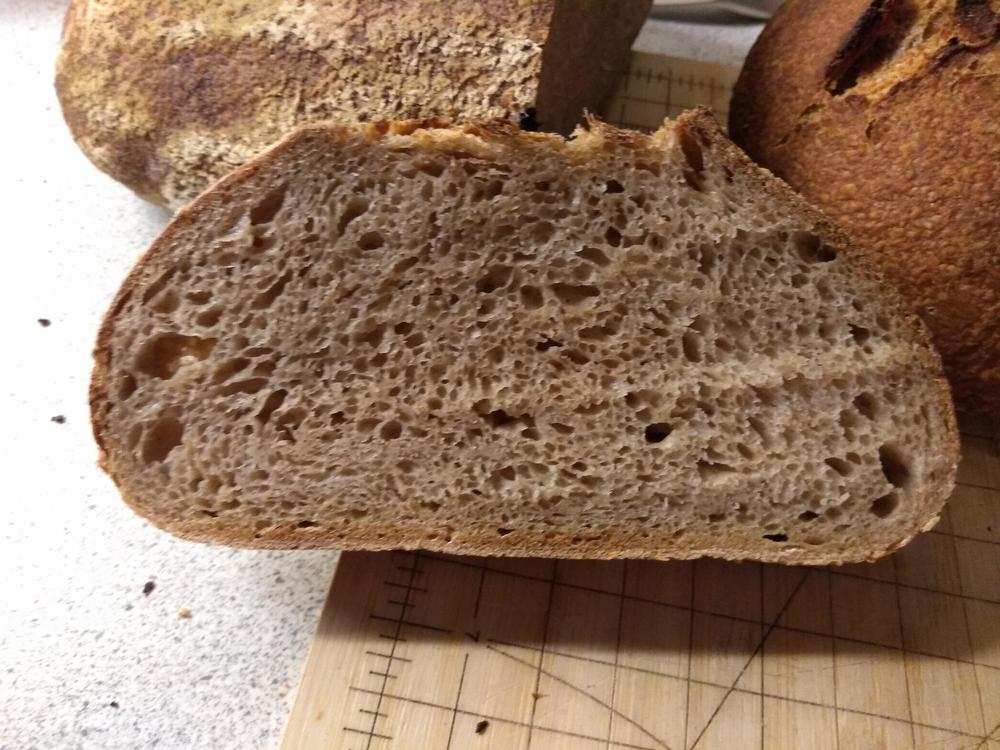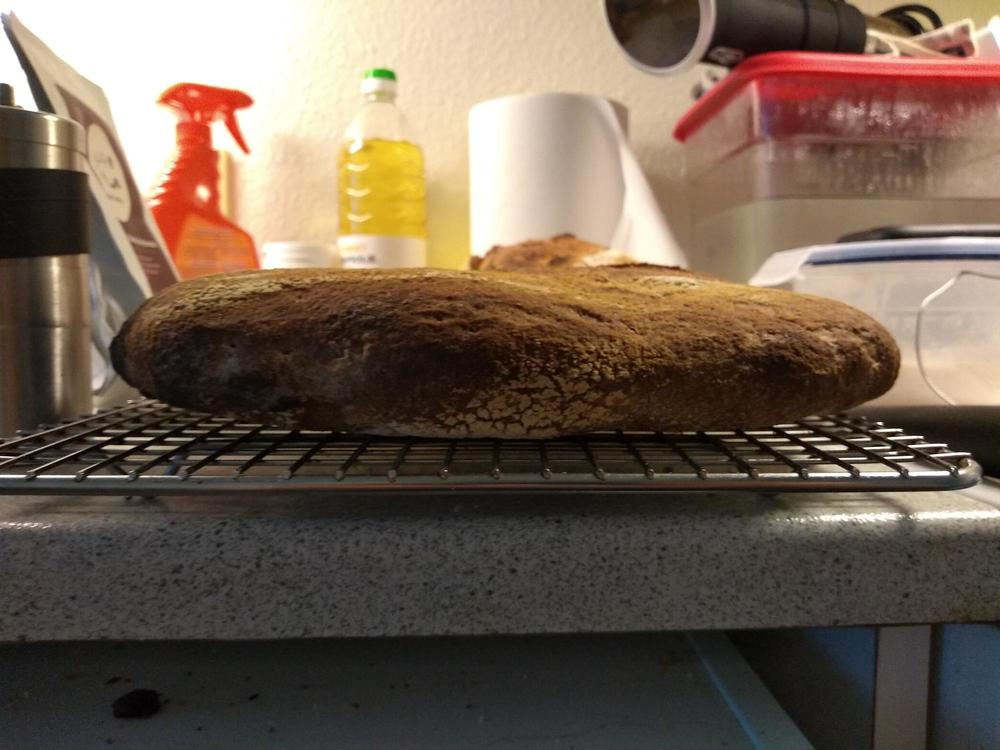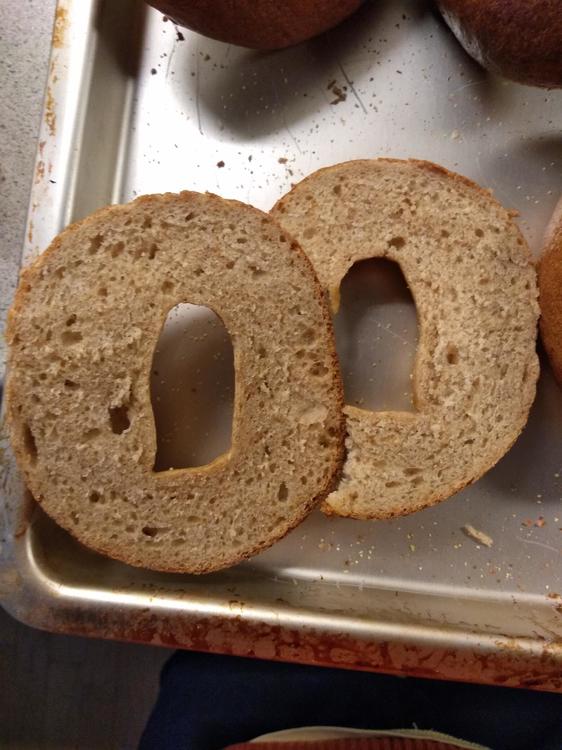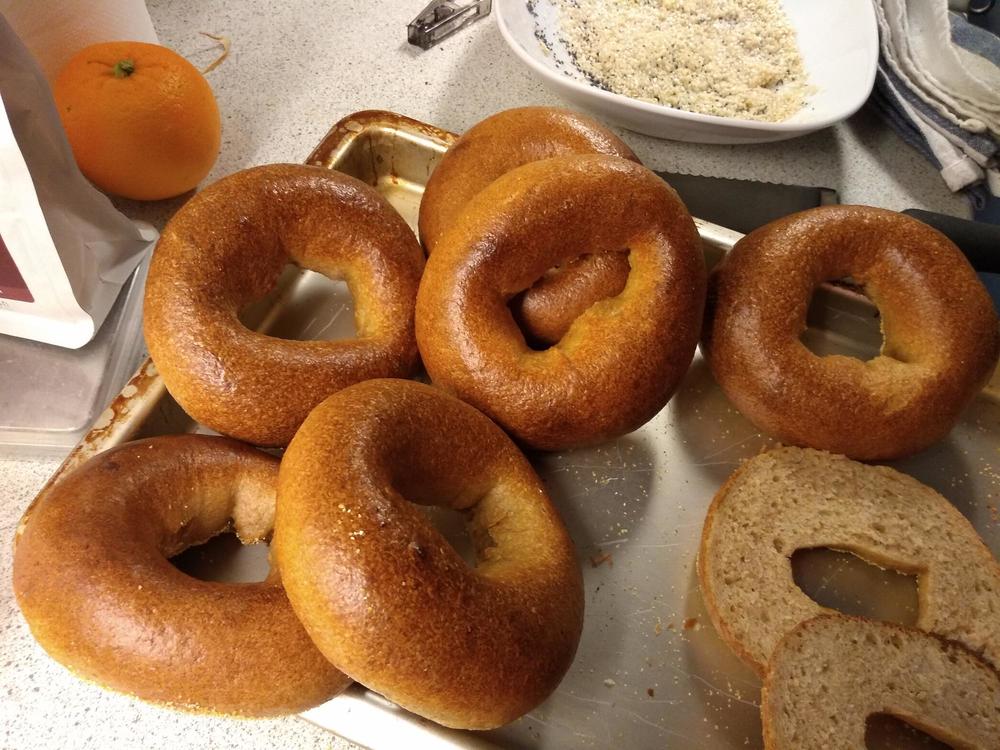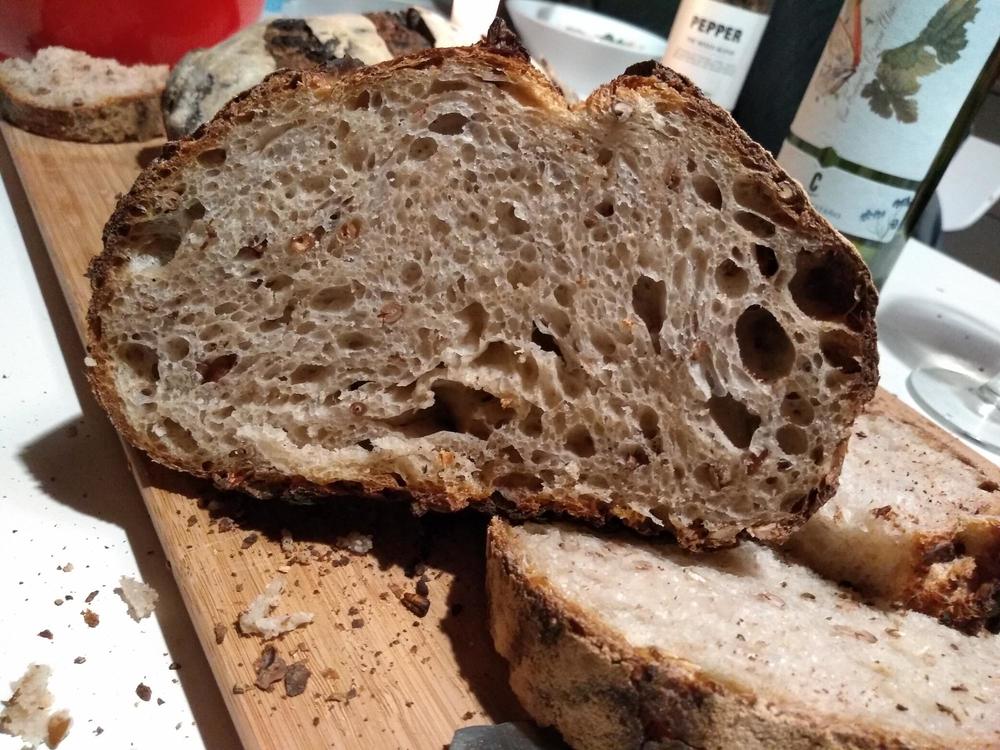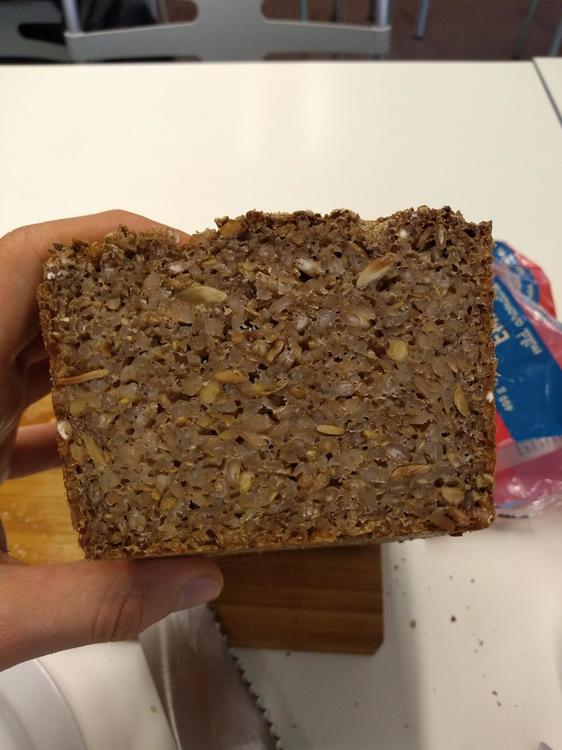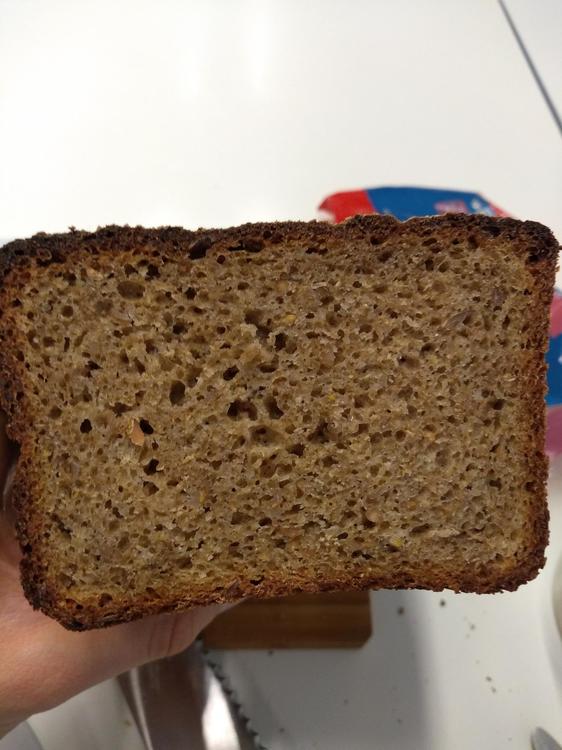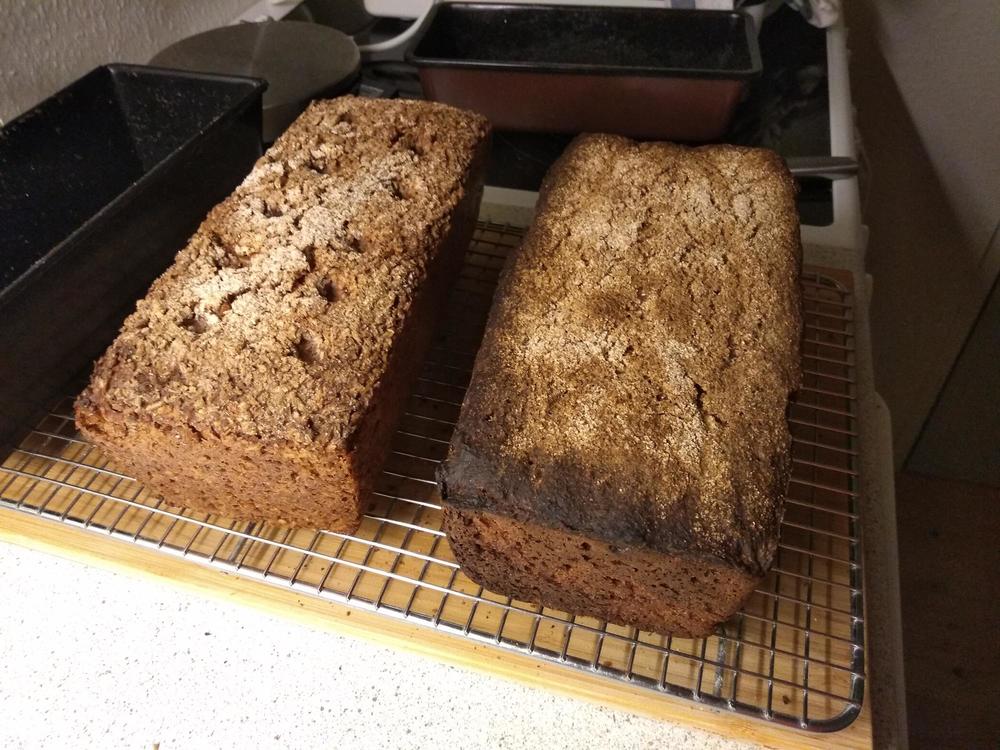
Kmanim
participating member-
Posts
17 -
Joined
-
Last visited
Content Type
Profiles
Forums
Store
Help Articles
Everything posted by Kmanim
-
Baking with Myhrvold's "Modernist Bread: The Art and Science"
Kmanim replied to a topic in Pastry & Baking
I can have a check later today. They give methods for how to make a couple of different different nut milks and whey (which I forgot to mention was in this nut milk bread) but I don't remember how in-depth their discussion was. You could try checking your local library. I've managed to get the books out (one by one) from my local library on interloan from a university. -
Baking with Myhrvold's "Modernist Bread: The Art and Science"
Kmanim replied to a topic in Pastry & Baking
Also, for the same friend, I tried their nut milk bread. It was a little less successful than the pizza. The crumb was pleasantly soft and open and very moist - unlike any gluten-free bread I've seen before. However, the crumb reminded me of squeaky cheese curds in a way that I didn't find too pleasant in the bread and it was just the tiniest bit greasy which wasn't great either. I used corn milk for the milk (because it was the only reasonably priced milk I could make from their list - even so, it was the most expensive loaf I've ever made) which also had a really weird flavour. I'm sure the corny flavour would have worked very well dipped in chili or served with beans and lots of cumin. It overproofed a little bit, but It still provided a fine loaf. If I was in the business of making gluten-free breads, I would definitely give this another few goes to find the right nut milk flavour. -
Baking with Myhrvold's "Modernist Bread: The Art and Science"
Kmanim replied to a topic in Pastry & Baking
A gluten-free friend of mine challenged me to make a gluten-free bread so I tried making pizza with their blend. The brown rice flour couldn't be found so I had to crudely mill whole brown using my food processor (which was very loud and took nearly 20 minutes to get only a 40% yield when sifted). I also omitted the non-fat milk powder from the flour blend. I bulked for 90m, and cold proofed for 24h (although I don't know if cold proofing would make a big difference). Rolled out very easily and loaded into the oven on a stone pretty easily. Topped with the MB tomato sauce, grana padano, Danish ceddar, and mushrooms. It was not on the level of the pizza I make using gluten, but it was definitely better than several (gluten-not-free) pizzas I have bought at restaurants, and by far the best gluten-free bread of any kind I have ever had. I definitely wouldn't have guessed it was gluten-free when eating it. It was more crispy, rather than chewy, but you could even see some tiny bubbles in the crust! -
Baking with Myhrvold's "Modernist Bread: The Art and Science"
Kmanim replied to a topic in Pastry & Baking
I tried the Galliard loaf again with the corrections I suggested above and we have success! Just as they described it - an airy and springy loaf with good volume and open crumb. And my crumb looks just like theirs did! It has a stronger flavour than wheat that reminds me of loaves made with high % rye. The acidity is more pronounced than I'd prefer but I could have opted not to cold proof it -
Baking with Myhrvold's "Modernist Bread: The Art and Science"
Kmanim replied to a topic in Pastry & Baking
I just managed to procure some soy lecithin so my first thought was to attempt the Galliard loaf... Let's just say I've made many Neapolitan pizzas that were taller than this loaf. I followed the instructions for mixing and let bulk for about 10h @ 23°C. I then went to hand knead to full development but, despite their instructions to machine mix 3-5m to full development, after at least 10m of hand kneading, I realised that it was unravelling more and more and it was at its strongest when I gave it some 4-edge folds to get it out of the bowl before kneading it. I tried putting it in the fridge to firm up and giving it several turns but all was lost in the end 😢😢😢😢 I will try it again, but use the recipe source's amount of sourdough to limit chance of the dough breaking down during bulk (MB used 5% more levain than Spiller) and Spiller's instructions to knead by hand only until smooth (rather than to full windowpane) and then shape immediately after that. -
Baking with Myhrvold's "Modernist Bread: The Art and Science"
Kmanim replied to a topic in Pastry & Baking
It definitely hasn't seemed like the silver bullet they touted it to be but your bagels look amazing so it must be able to work! I will give your way a go tomorrow morning with some wheat bran (a little cheaper to waste!). Maybe I will also try putting some straight on the rack and sprinkling the topping over without dipping it. I wonder what their results looked like when they used different starches (different ultratex, pregelatinised tapioca starch etc.) -
Baking with Myhrvold's "Modernist Bread: The Art and Science"
Kmanim replied to a topic in Pastry & Baking
Does anyone have any experience with the modified starch slurry for bagels? I have just tried it and I ended up wasting a large (and expensive) amount of sesame seeds because when I dipped the ultratex-coated bagel into the sesame seeds, it left small pools of the slurry. After dipping the first bagel, the bottom of the bowl became a sticky sesame-porridge and then they wouldn't adhere to anymore bagels I put in and would just slide off. Then the bagels ended up unevenly coated with big chunks of the gloopy sesame seeds which also didn't all dry out in the oven... My only thought was that maybe the ultratex needed more time to thicken. I left it for 2h but I wasn't sure what 'thick enough to cling to the surface of the bagels' meant. I will try again tonight after the ultratex sits during the day in the fridge and hopefully thickens some more. In less-frustrating news, I ran out of bread flour while I was weighing it (oops) so ended up using 30% wholegrain Spelt and 10% med rye with 1.4% vital wheat gluten and still ended up with uncompromised and delicious bagels! -
Baking with Myhrvold's "Modernist Bread: The Art and Science"
Kmanim replied to a topic in Pastry & Baking
Could someone confirm that the recipe at the bottom of this article is the same from volume 5 for their everything everywhere bagels? https://m.mic.com/articles/amp/185648/food-scientist-nathan-myrhvold-figured-out-how-to-keep-everything-bagel-toppings-from-falling-off For those who have worked with this, how much slurry do you find you need to make for a recipe of bagel dough (1kg/7 bagels)? I need an idea of how much ultra Tex I need to be ordering... -
Baking with Myhrvold's "Modernist Bread: The Art and Science"
Kmanim replied to a topic in Pastry & Baking
Wow both those loaves look amazing - better-looking baguettes than most of the ones I had in Paris over New Year! -
Baking with Myhrvold's "Modernist Bread: The Art and Science"
Kmanim replied to a topic in Pastry & Baking
Well the weight definitely isn't it. I've actually been having a spreading issue since I've started trying out their shaping methods last week... If I were smart, I'd go back to the way I was doing it before but I'm trying to give their instructions a chance. @Chris Hennes how do you shape your batards? You always seem to have nice tall loaves (like that amazing-looking ancient grain loaf!). -
Baking with Myhrvold's "Modernist Bread: The Art and Science"
Kmanim replied to a topic in Pastry & Baking
I just managed to get Vol. 2 & 3 from my public library (thank you!). Very helpful for informing some assumptions I had made from just Vol. 4. But it has also raised some questions I was hoping someone could help me with. I capriciously bought some (expensive) calcium ascorbate thinking it would work the same as ascorbic acid as it had vitamin C labelled all over it. Does anyone here know if it should work more-or-less as well as ascorbic acid? I'm not good enough at chemistry and I'm not sure how to conduct an experiment to check that it is doing it's job. I have made their ancient grain bread and daily bread which use it but I had no control, and I'm not sure how pronounced its effect is supposed to be on the dough either. Does anyone else find the batard preshaping and shaping instructions confusing? I can't even understand their preshaping instructions on 3.154, and the shaping instructions that follow on both pages are also relatively complicated to understand. I seem to end up with a much longer batard than in their pictures. Has anyone managed to make a food processor work for the lean doughs from vol. 4 that are higher than the hydration from the Van Over formula? Every time I've tried mixing another dough formula (including ones that they have food processor instructions for), I've ended up with a batter that stops mixing properly and overheats my Magimix (and rides up the inside of the blade and makes it really annoying to clean). Does anyone have any experience with higher (than Van Over) hydration doughs in the fp? -
Baking with Myhrvold's "Modernist Bread: The Art and Science"
Kmanim replied to a topic in Pastry & Baking
When Myhrvold was talking about taking pictures of the cut-in-half wok for Modernist Cuisine and how it kept lighting on fire, he said "it only has to look good for 1/1000th of a second!" The problem I had with my crumb was that it seemed tougher than the crumbs I got on other sourdoughs prior to working with Modernist Bread. Your crumbs honestly look very good though, and I'm sure they taste excellent! I think Instagram has spoiled our appetite for open crumbs... What size loaf are you working with? I generally bake 700-800g loaves for batards. I started to move towards it because that seems to be the right size for my banneton, but I have also found that if I go for 1kg, I tend to lose a bit of volume. -
Baking with Myhrvold's "Modernist Bread: The Art and Science"
Kmanim replied to a topic in Pastry & Baking
Whenever I bake using their sourdough formula, I find I get very similar crumbs to yours. These were the same dough (though it has something like 6-10% rye flour) which I vacuum mixed, bulked for about 2.5h. One got popped rye as an inclusion and the other nothing. One was proofed for 24h and another for 36h at 4°C (I can't remember which is which though they were fairly similar). The flavour was excellent but I found the crumb to be tough and meaty and not particularly open (still a pleasure to eat). I find this dough much drier than I'm used to so the easiest solution for me is to increase the hydration as I haven't found extending the proof from 12 -> 36h to have much of an impact besides scheduling convenience. To be honest, I have had more open crumbs than these using the Van Over method (which has a lower hydration) despite their numerous warnings (I think just about every time they mention the method) that it will produce a tight crumb. -
Baking with Myhrvold's "Modernist Bread: The Art and Science"
Kmanim replied to a topic in Pastry & Baking
-
Baking with Myhrvold's "Modernist Bread: The Art and Science"
Kmanim replied to a topic in Pastry & Baking
As I have just moved to Denmark, I thought it would be appropriate for me to make the MB rugbrød (and seeing as rye in all its forms is so cheap and readily-available here, vollkornbrot). I made the rugbrød with the optional instant yeast. According to the Danes who tried it, it had little-to-no relationship with the rugbrød they buy and eat (from the supermarket). They seemed more inclined to call it a country/farmer's bread and that it was like how their grandmothers made rugbrød... It seems that even Northern Europe's sacred rye breads are being tainted by supermarkets and industrial processing. Vollkornbrot on the left, rugbrød on the right. But, my German and Austrian taste-testers said the MB vollkornbrot was exactly what they would have back home! It is a very time-intensive bread to make though - I started soaking the rye berries on a Sunday night and could finally cut io it on Thursday morning... Both built to last - about 5 days without noticeable staling and were perfectly edible for about 8 days. -
Baking with Myhrvold's "Modernist Bread: The Art and Science"
Kmanim replied to a topic in Pastry & Baking
Have you tried mixing by hand to see if you get very different results? I have made this dough by hand several times with no problems. Just for experiment's sake you could try making the dough by hand to help see whether your stand mixer is playing a role in the problem. In my experience, I find that if I use the finger-poke test too early during the final proofing, I tend to get false-positives. I am not exactly sure what is at play there but I suspect that there hasn't been enough time for gases to form and expand the dough enough to spring back against the poke. For me, it takes about 30 minutes for hand-mixed commercially yeasted breads to stop giving these false-positives and hand mixed sourdoughs can take over an hour before the poke test starts to help me. Otherwise, a positive poke test that early on in a commercially yeasted bread could be over-extending initial bulk fermentation (the dough being too gaseous after shaping) and the fact that your boules are 'flat' suggests to me that the dough over-proofed. -
Baking with Myhrvold's "Modernist Bread: The Art and Science"
Kmanim replied to a topic in Pastry & Baking
I was wondering if anyone could provide me with some more info regarding vacuum autolysing/kneading/mixing. I've only been able to read volume 4 through a former local library so I haven't been able to read their text in vol 3 on their vacuum technique beyond what was included in their modernist French lean bread recipe. But, alas, I'm a uni student poor on both time and money so I'm very keen to see if I can improvise a cheap setup for making bread with a faster bulk ferment time than hand mixing can offer. I have already bought a brake bleed pump which can generate nearly -25inMg which I believe holds up (at least in theory) against a FoodSaver. But, several jars and Ikea container lids, and a hole heap of hot glue later, I have been unable to hook my brake bleeder up to any container with a satisfactory seal. My new idea was to buy a FoodSaver accessory (canister or mason jar sealer) and find a way to attach it to my brake bleeder to generate the vacuum with a good seal. But ChezAndré mentioned earlier that he was unable to get particularly conclusive results using a FoodSaver canister. I don't understand why it didn't work for ChezAndre but seeing as it didn't, I don't want to spend more money on something that might not work. Has anyone else tested (or is anyone else able to test) using any FoodSaver accessories to vacuum mix/auto/knead the dough?

